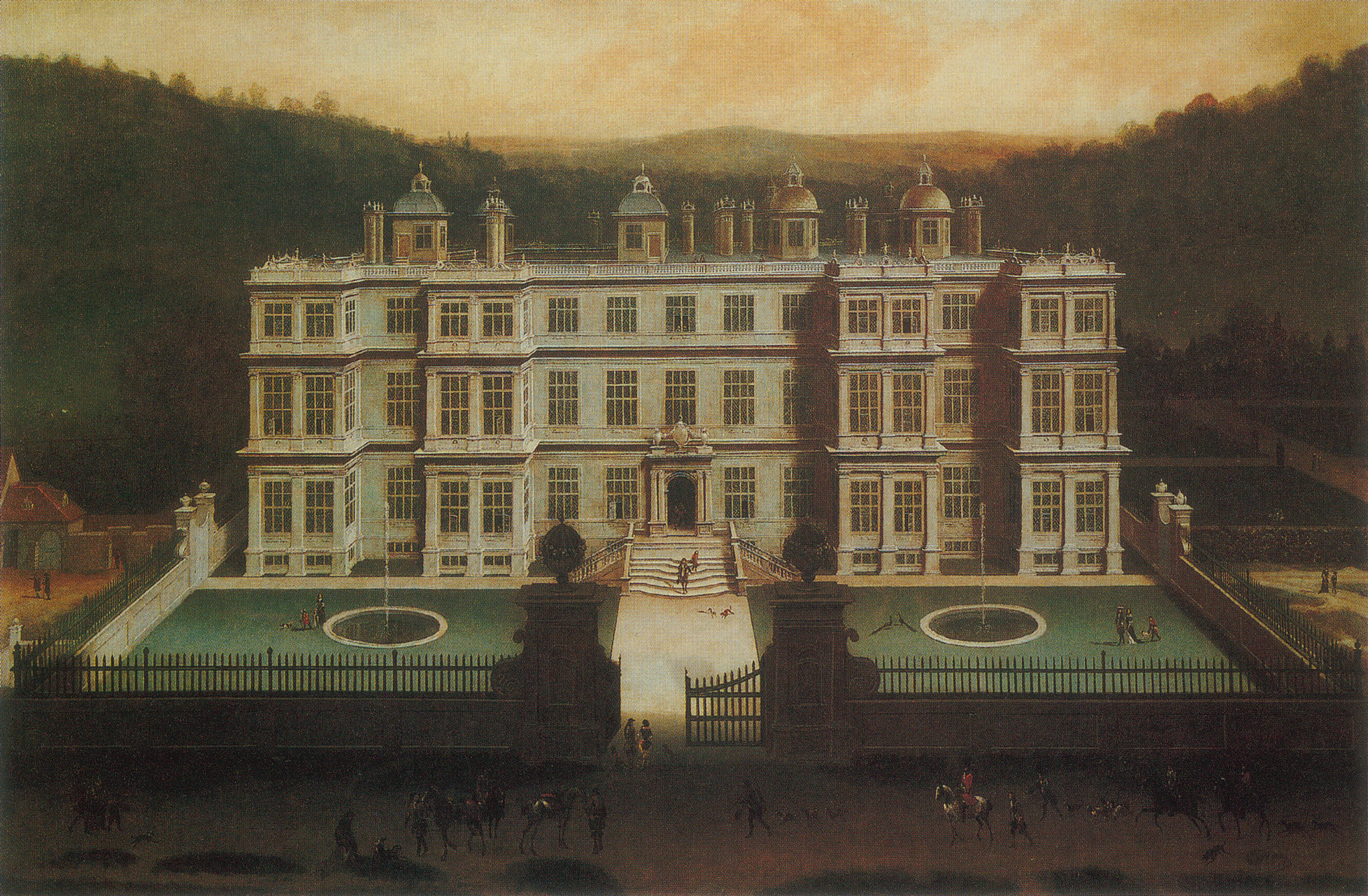|
Linda Sutton
Linda Sutton (born 1947) is a British painter. She was born in Southend-on-Sea, Essex. She studied at Winchester School of Art and the Royal College of Art in London, graduating in 1974. She is a regular exhibitor at the Royal Academy Summer Exhibition. Collections Sutton paintings are in art collections throughout the world. These include: *Queen Fabiola of Belgium * Royal Academy of Arts *Sainsbury Collection *Alexander Thynn, 7th Marquess of Bath (Longleat House Longleat is an English stately home and the seat of the Marquesses of Bath. A leading and early example of the Elizabethan prodigy house, it is adjacent to the village of Horningsham and near the towns of Warminster and Westbury in Wilts ...) *Ian & Cynthia Short Collection References External linksArtist's website 1947 births Living people 20th-century English painters 21st-century English painters 20th-century English women artists 21st-century English women artists Alumni of the Royal ... [...More Info...] [...Related Items...] OR: [Wikipedia] [Google] [Baidu] |
Painting
Painting is the practice of applying paint, pigment, color or other medium to a solid surface (called the "matrix" or "support"). The medium is commonly applied to the base with a brush, but other implements, such as knives, sponges, and airbrushes, can be used. In art, the term ''painting ''describes both the act and the result of the action (the final work is called "a painting"). The support for paintings includes such surfaces as walls, paper, canvas, wood, glass, lacquer, pottery, leaf, copper and concrete, and the painting may incorporate multiple other materials, including sand, clay, paper, plaster, gold leaf, and even whole objects. Painting is an important form in the visual arts, bringing in elements such as drawing, composition, gesture (as in gestural painting), narration (as in narrative art), and abstraction (as in abstract art). Paintings can be naturalistic and representational (as in still life and landscape painting), photographic, abstract, nar ... [...More Info...] [...Related Items...] OR: [Wikipedia] [Google] [Baidu] |
Alumni Of The University Of Southampton
This is a list of University of Southampton people, including famous officers, staff (past and present) and student alumni from the University of Southampton or historical institutions from which the current university derives. Officers Chancellors Hartley Institution and Hartley College Chancellors were known as principals before the formation of University College *1862–1873 Francis Bond *1873–1874 Charles Blackader *1875–1895 Thomas Shore *1896–1900 R. Stewart *1900–1902 Spencer Richardson University College Chancellors were known as presidents before the formation of university *1902–1907 Arthur Wellesley, 4th Duke of Wellington *1908–1908 Sir Alfred Wills *1910–1913 Claude Montefiore (Acting President) *1913–1934 Claude Montefiore *1934–1947 Lord John Seely *1948–1949 Lord Wyndham Portal *1949–1953 Gerald Wellesley, 7th Duke of Wellington University *1952–1962 Gerald Wellesley, 7th Duke of Wellington *1964–1974 Lord Keith Murray *1974–1984 ... [...More Info...] [...Related Items...] OR: [Wikipedia] [Google] [Baidu] |
Alumni Of The Royal College Of Art
Alumni (singular: alumnus (masculine) or alumna (feminine)) are former students of a school, college, or university who have either attended or graduated in some fashion from the institution. The feminine plural alumnae is sometimes used for groups of women. The word is Latin and means "one who is being (or has been) nourished". The term is not synonymous with "graduate"; one can be an alumnus without graduating (Burt Reynolds, alumnus but not graduate of Florida State, is an example). The term is sometimes used to refer to a former employee or member of an organization, contributor, or inmate. Etymology The Latin noun ''alumnus'' means "foster son" or "pupil". It is derived from PIE ''*h₂el-'' (grow, nourish), and it is a variant of the Latin verb ''alere'' "to nourish".Merriam-Webster: alumnus .. Separate, but from the s ... [...More Info...] [...Related Items...] OR: [Wikipedia] [Google] [Baidu] |
21st-century English Women Artists
The 1st century was the century spanning AD 1 ( I) through AD 100 ( C) according to the Julian calendar. It is often written as the or to distinguish it from the 1st century BC (or BCE) which preceded it. The 1st century is considered part of the Classical era, epoch, or historical period. The 1st century also saw the appearance of Christianity. During this period, Europe, North Africa and the Near East fell under increasing domination by the Roman Empire, which continued expanding, most notably conquering Britain under the emperor Claudius (AD 43). The reforms introduced by Augustus during his long reign stabilized the empire after the turmoil of the previous century's civil wars. Later in the century the Julio-Claudian dynasty, which had been founded by Augustus, came to an end with the suicide of Nero in AD 68. There followed the famous Year of Four Emperors, a brief period of civil war and instability, which was finally brought to an end by Vespasian, ninth Roman emperor, a ... [...More Info...] [...Related Items...] OR: [Wikipedia] [Google] [Baidu] |
21st-century English Painters
The 1st century was the century spanning AD 1 ( I) through AD 100 ( C) according to the Julian calendar. It is often written as the or to distinguish it from the 1st century BC (or BCE) which preceded it. The 1st century is considered part of the Classical era, epoch, or historical period. The 1st century also saw the appearance of Christianity. During this period, Europe, North Africa and the Near East fell under increasing domination by the Roman Empire, which continued expanding, most notably conquering Britain under the emperor Claudius (AD 43). The reforms introduced by Augustus during his long reign stabilized the empire after the turmoil of the previous century's civil wars. Later in the century the Julio-Claudian dynasty, which had been founded by Augustus, came to an end with the suicide of Nero in AD 68. There followed the famous Year of Four Emperors, a brief period of civil war and instability, which was finally brought to an end by Vespasian, ninth Roman emperor, ... [...More Info...] [...Related Items...] OR: [Wikipedia] [Google] [Baidu] |
Living People
Related categories * :Year of birth missing (living people) / :Year of birth unknown * :Date of birth missing (living people) / :Date of birth unknown * :Place of birth missing (living people) / :Place of birth unknown * :Year of death missing / :Year of death unknown * :Date of death missing / :Date of death unknown * :Place of death missing / :Place of death unknown * :Missing middle or first names See also * :Dead people * :Template:L, which generates this category or death years, and birth year and sort keys. : {{DEFAULTSORT:Living people 21st-century people People by status ... [...More Info...] [...Related Items...] OR: [Wikipedia] [Google] [Baidu] |
Longleat House
Longleat is an English stately home and the seat of the Marquesses of Bath. A leading and early example of the Elizabethan prodigy house, it is adjacent to the village of Horningsham and near the towns of Warminster and Westbury in Wiltshire, and Frome in Somerset. The Grade I listed house is set in of parkland landscaped by Capability Brown, with of let farmland and of woodland, which includes a Center Parcs holiday village. It was the first stately home to open to the public, and the Longleat estate has the first safari park outside Africa and other attractions including a hedge maze. The house was built by Sir John Thynne and designed mainly by Robert Smythson, after Longleat Priory was destroyed by fire in 1567. It took 12 years to complete and is widely regarded as one of the finest examples of Elizabethan architecture in Britain. It continues to be the seat of the Thynn family, who have held the title of Marquess of Bath since 1789; the eighth and present Marquess is ... [...More Info...] [...Related Items...] OR: [Wikipedia] [Google] [Baidu] |
Southend-on-Sea
Southend-on-Sea (), commonly referred to as Southend (), is a coastal city and unitary authority area with borough status in southeastern Essex, England. It lies on the north side of the Thames Estuary, east of central London. It is bordered to the north by Rochford and to the west by Castle Point. It is home to the longest pleasure pier in the world, Southend Pier. London Southend Airport is located north of the city centre. Southend-on-Sea originally consisted of a few poor fishermen's huts and farms at the southern end of the village of Prittlewell. In the 1790s, the first buildings around what was to become the High Street of Southend were completed. In the 19th century, Southend's status of a seaside resort grew after a visit from Princess Caroline of Brunswick, and Southend Pier was constructed. From the 1960s onwards, the city declined as a holiday destination. Southend redeveloped itself as the home of the Access credit card, due to its having one of the UK's first ... [...More Info...] [...Related Items...] OR: [Wikipedia] [Google] [Baidu] |
Alexander Thynn, 7th Marquess Of Bath
Alexander George Thynn, 7th Marquess of Bath (6 May 1932 – 4 April 2020), styled Viscount Weymouth between 1946 and 1992, was an English peer and landowner, owner of the Longleat estate, who sat in the House of Lords from 1992 until 1999, and also an artist and author. Lord Bath was in the media spotlight for his hippy fashion-sense and his many "wifelets". The '' Sunday Times Rich List 2009'' gave him an estimated wealth of £157 million. Early life and education Thynn was born in London, the son of Henry Thynne, 6th Marquess of Bath and Daphne Fielding, and grew up at his family seat, Longleat, a grand Elizabethan house set in Wiltshire parkland landscaped in the 18th century by Capability Brown. After attending Ludgrove School and Eton College, he joined the Life Guards for National Service, being commissioned as a Lieutenant in 1951. He then went up to Christ Church, Oxford, where he was President of the Bullingdon Club, before embarking upon a modern-day Euro ... [...More Info...] [...Related Items...] OR: [Wikipedia] [Google] [Baidu] |






